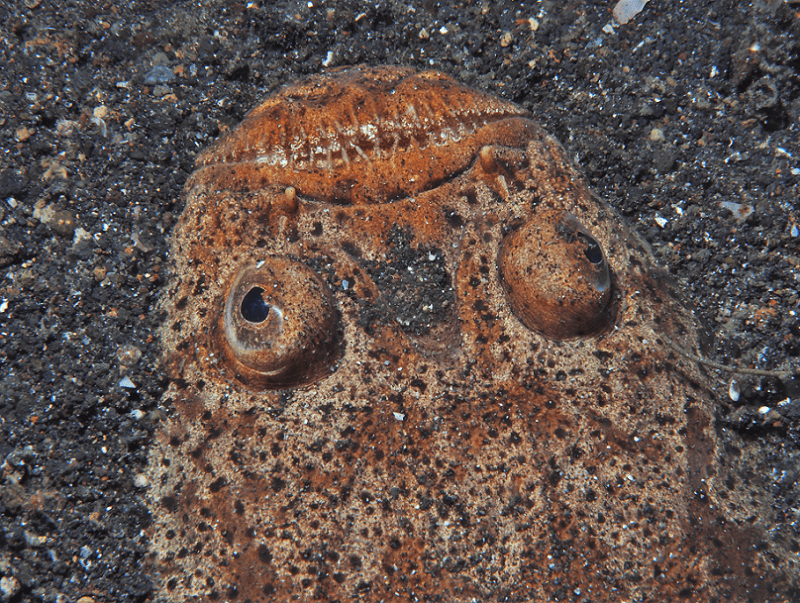Whitemargin Stargazer Facts
- First of all, the supremely unique-looking Whitemargin Stargazer constitutes a highly unique species of fish. Furthermore, this remarkable creature also inhabits a rather large portion of the oceans of the world.
- Completely unsurprisingly, the common name of this strange seeming fish derives from one distinctive feature. The term originates with the unique positioning of its eyes, because these actually sit on the top of its head.
- Though in no way related to the electric eel, this surprising fish evolved the same remarkable ability. Like the eel, it can generate an electric shock. In its case, this discharge can be as much as up to 50 volts.
- For the moment, this unique species has not yet been evaluated by the IUCN. This occurs primarily due to a lack of sufficient information about its current population and potential threats. However, one can assume that, at the very least, it faces the same threat from climate change as other species.
Related Articles
Whitemargin Stargazer Physical Description
Most notably, regardless of its distinctiveness, the admittedly odd-looking Whitemargin Stargazer remains a fairly small fish species. That holds true because mature individuals only average about 13.8 in (35 cm) in length.
However, without doubt, the most obvious physical feature of this creature remains its eyes. In fact, these orbs actually develop positioned on the top of the creature’s head. This has the result of giving it a most unusual appearance.
In addition, its coloring typically appears as a mottled combination of gray, brown, and white. However, numerous small black dots also generally cover the body of the creature. This combination provides it with excellent natural camouflage.
Furthermore, this species also evolved an adaptation that only a few other species have. To stun its prey, it evolved a specialized organ behind the eyes that’s capable of discharging an electric charge of up to 50 volts.
- Kingdom: Animalia
- Phylum: Chordata
- Class: Actinopterygii
- Order: Trachiniformes
- Family: Uraniscopidae
- Genus: Uranoscopus
- Species: U. sulphureus
Whitemargin Stargazer Distribution, Habitat, Ecology
Worth note remains the fact that the bizarre-seeming Whitemargin Stargazer evolved as endemic to a rather swathe of the Indo-Pacific Ocean. Due to this, the species appears to be most prevalent in the vicinity of the islands of Fiji, Samoa, and Tonga, in Asia.
Also, this fascinating and astonishing animal predominantly lives in a specific habitat type. This consists of sandy lagoons, silty regions, and coastal waters. This type of environment allows it to more readily bury itself away from its prey.
It also evolved as a masterful ambush predator. When in the sand, only its eyes and mouth remain open. In fact, this fish remains one of the great masters of camouflage in any ocean. Due to its tendency to conceal itself in this manner, humans do not commonly see them.
The animal also, like most types of fish, evolved entirely as a carnivore. In its case, it feeds primarily upon small octopus, squid, and a variety of small fish. In addition to its other abilities, it also strikes with great speed, and has two spines equipped with a powerful toxin.
Species Sharing Its Range
Check out our other articles on 6 Mysterious Natural Phenomena, Victoria Crowned Pigeon, Pewits Nest, Bulbophylum phalaenopsis, Spiny Bush Viper, Vietnamese Mossy Frog, Rabid Wolf Spider

